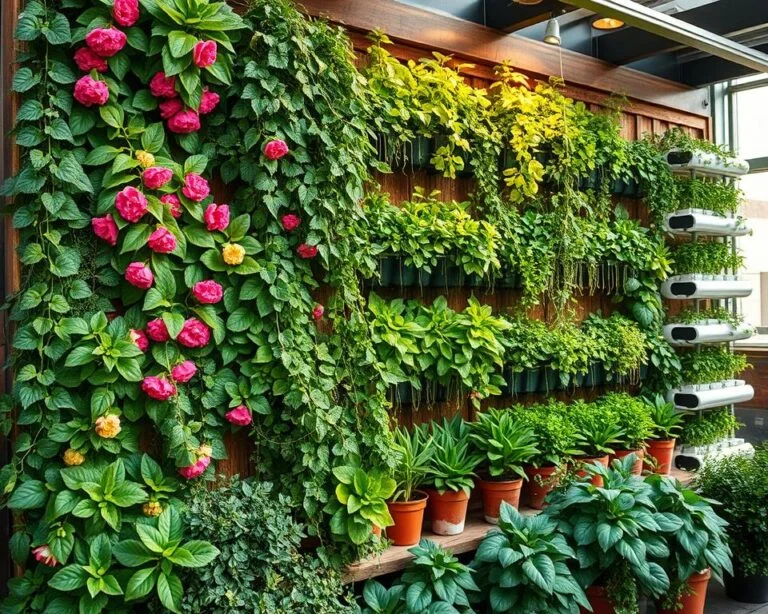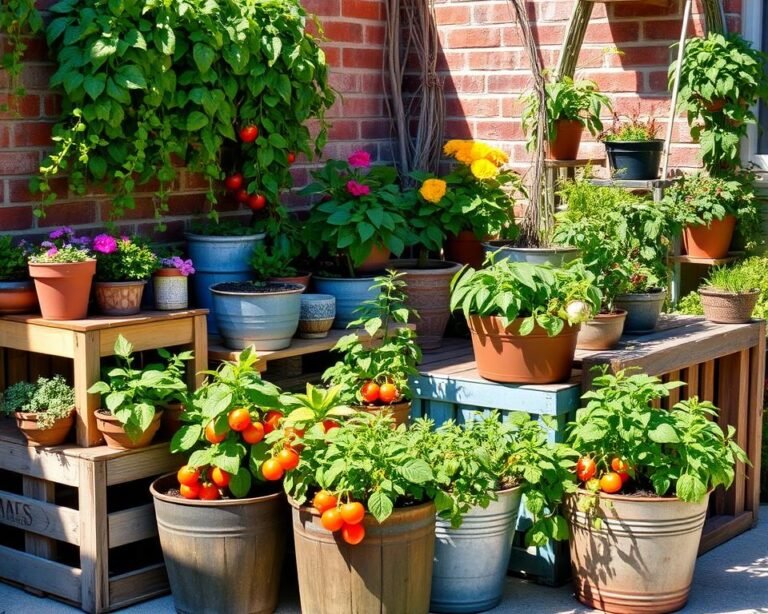Wall‑Mounted Systems for Vertical Gardens
I discovered the magic of vertical gardening while living in a small San Francisco apartment. My dull concrete balcony became a lush oasis—proof that even limited space can bloom with the right wall‑mounted systems.
Vertical gardening uses innovative, space‑saving solutions to help urban dwellers turn blank walls into productive green zones. Modern wall‑mounted systems not only elevate home décor but also let you grow herbs, flowers, and veggies with ease.growing areas.
By embracing these adaptable setups, you can transform any apartment, office, or storefront into a stylish, plant‑filled sanctuary—maximising every inch while enjoying fresher air and home‑grown produce.
Key Takeaways
- Vertical gardens maximize limited urban spaces
- Wall-mounted systems can improve air quality
- Variety of plants can be grown vertically
- Suitable for indoor and outdoor environments
- Reduces traditional gardening constraints
Understanding the Benefits of Vertical Gardens for Urban Spaces
Vertical gardens are changing the game for city folks wanting to use their space better. They’re not just pretty; they’re good for you and the planet. These wall-mounted wonders bring many benefits that boost your health and help the environment.
Physical and Mental Health Advantages
Vertical gardens do more than look good—they help your health. Studies show they clean the air by removing bad stuff. People working near green walls feel:
- Less stressed
- More satisfied with their jobs
- Healthier mentally
Space Optimization Benefits
City folks can turn blank walls into green oases with wall-mounted shelves. Vertical gardens pack a lot into a small space. They’re perfect for growing herbs, greens, and vines in tight spots.
Environmental Impact Improvements
Vertical gardens are great for the environment in cities. They can:
- Lower wall temperatures by 30-40°F
- Save energy by 0.7%
- Provide homes for city wildlife
- Block city noise
By mixing wall-mounted furniture with plants, you can make spaces that are good for you and the planet.
Essential Components of Wall‑Mounted Systems
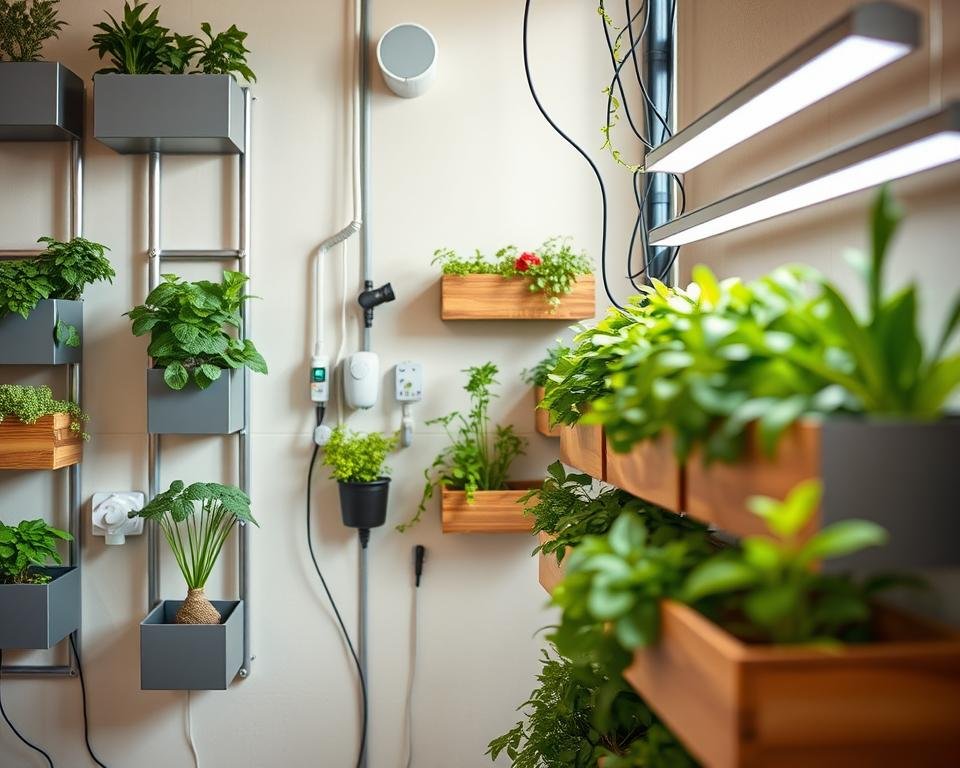
Starting a vertical garden means knowing the key parts of wall-mounted systems. Success depends on picking the right racks and organizing well.
The main parts of a vertical garden are:
- Sturdy wall-mounted brackets for secure installation
- Durable planting containers or panels
- Integrated drainage systems
- Lightweight growing media
Wall-mounted organizers come in many designs. Modular systems let you change your garden’s layout and grow it as you want.
Choosing the right materials is key for a lasting garden. Here are some options:
- Recycled plastic containers
- Weatherproof metal frames
- Breathable fabric planters
- Ceramic or terracotta modules
Good irrigation is vital for your garden. Self-watering systems in wall-mounted racks make care easy. Look for systems with water reservoirs and drip irrigation for healthy plants.
Selecting the Perfect Plants for Your Vertical Garden
Creating a successful vertical garden needs careful plant selection. This goes beyond traditional gardening. Your choices will make or break your green space, whether using wall-mounted cabinets or tv wall mounts.
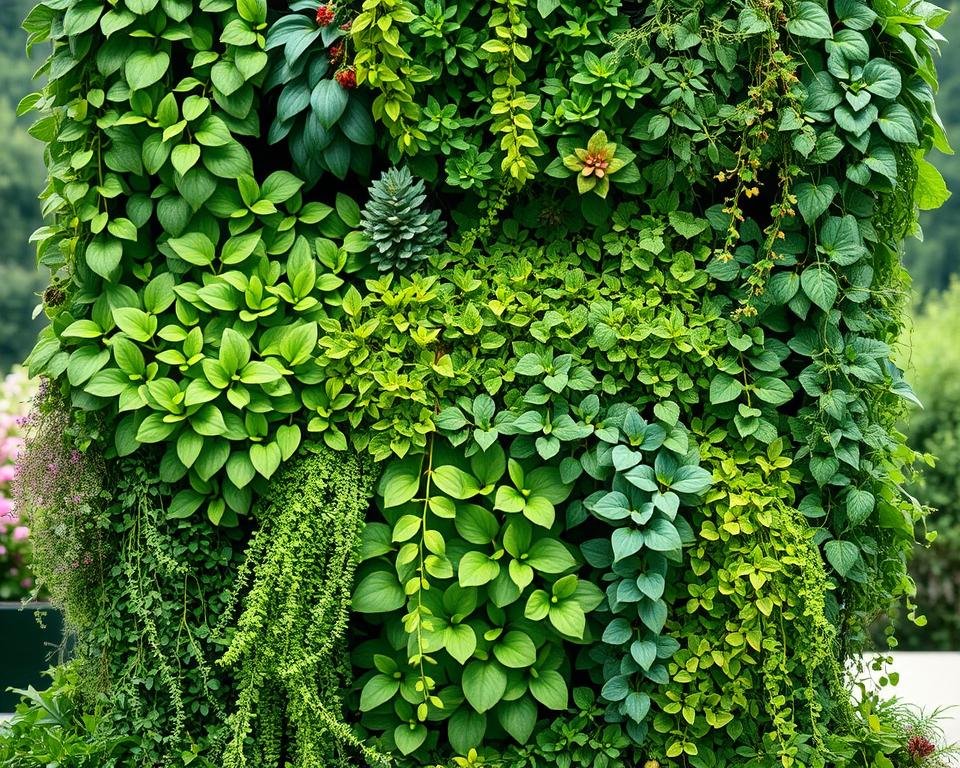
Vertical gardening lets you use small spaces to create beautiful green displays. The right plants can turn your wall into a living, breathing ecosystem.
Indoor Plant Selection Guide
For indoor vertical gardens, choose plants with specific traits:
- Shallow root systems
- Low light tolerance
- Compact growth habits
Recommended indoor plants include:
- Pothos
- Air plants
- Ferns
- Succulents
Outdoor Plant Recommendations
Outdoor vertical gardens offer more plant options. Here are some:
- Herbs: Basil, thyme, mint
- Leafy greens: Lettuce, spinach
- Flowering plants: Petunias, nasturtiums
“The right plant in the right place can transform a simple wall into a living masterpiece.” – Vertical Gardening Expert
Seasonal Plant Considerations
To keep your vertical garden vibrant all year, plan ahead. Rotate seasonal plants for continuous growth and beauty. Choose plants that thrive in different conditions and look good together all year.
When designing your vertical garden, remember plant selection is key. Just as you pick tv wall mounts or cabinets, choose plants that fit your space and style.
Installation and Support Structure Requirements
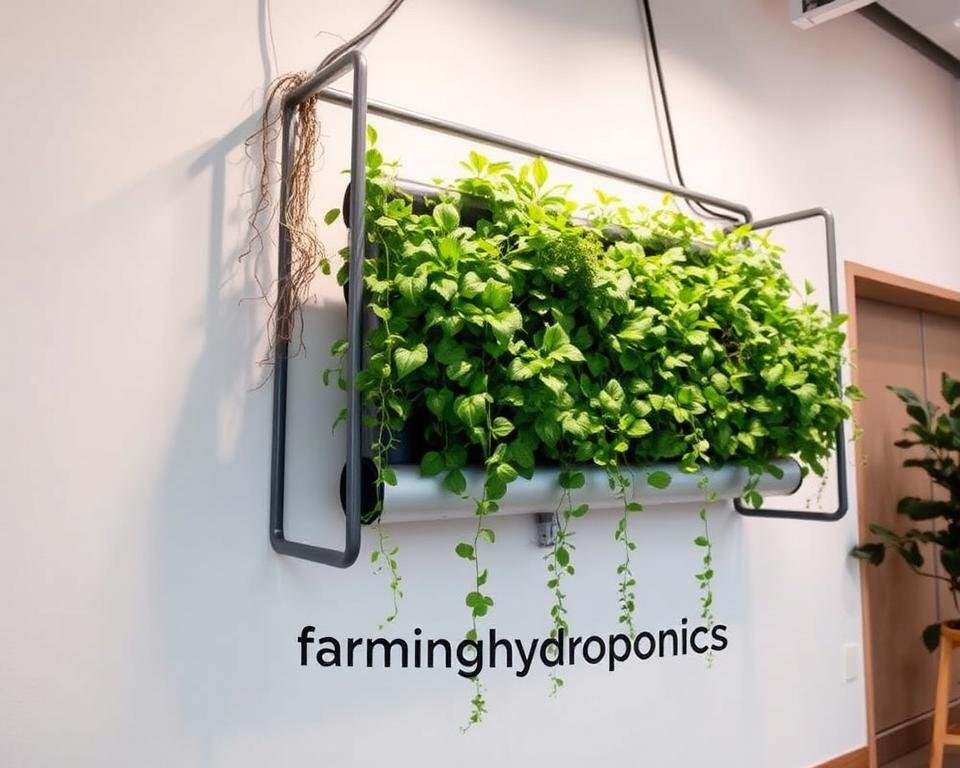
Setting up a wall-mounted vertical garden needs careful planning. You must pick the right materials and support systems for it to last. Wood is a popular choice, with cedar and redwood being durable and resistant to decay.
Before starting your vertical garden, think about these important parts:
- Wall strength assessment
- Appropriate anchoring methods
- Weight distribution strategies
- Waterproofing protection
Vertical gardens, like wall-mounted desks and storage, need strong mounting systems. The sturdiness of your setup affects the garden’s stability and how well it works.
| Material | Durability | Best Use |
|---|---|---|
| Cedar | High | Outdoor vertical gardens |
| Redwood | Very High | Moisture-rich environments |
| Treated Pine | Medium | Indoor and sheltered areas |
Your vertical garden’s success depends on the right support. You can choose from simple brackets to complex systems. Each has its own benefits for different garden sizes and weights.
Pro tip: Always get a pro to check if your wall can handle the garden’s weight and moisture.
Irrigation and Maintenance Solutions
To make your wall-mounted garden thrive, you need the right watering and care. Knowing how to water and maintain your garden is key. It will help your plants grow well.
Watering System Options
There are many ways to water your vertical garden. Here are a few:
- Drip irrigation systems with customizable zone controls
- Self-watering wall-mounted racks with integrated reservoirs
- Bluetooth-enabled smart controllers for precision watering
Irrigation System Specifications
| Feature | Specification |
|---|---|
| Controller Input Voltage | 120 VAC |
| Controller Output Voltage | 24 VAC |
| Maximum Controller Stations | 14 |
| Independent Programs | 3 |
Maintenance Best Practices
Keeping your garden in top shape is important. Here’s how to do it:
- Weekly plant inspection
- Monthly soil nutrient assessment
- Quarterly system cleaning
- Seasonal pruning and plant rotation
Troubleshooting Common Issues
Here are some common problems and how to fix them:
- Uneven water distribution: Adjust drip emitters
- Soil erosion: Use lightweight, moisture-retentive potting mix
- Plant stress: Monitor humidity and temperature
Pro tip: Implement a “Cycle and Soak” watering strategy to prevent water waste and ensure optimal plant hydration.
Creative Design Ideas for Living Walls
Make your living areas more vibrant with wall-mounted furniture and creative vertical gardens. These designs bring life to your home or office. Wall-mounted brackets open up new ways to create unique green spaces that are more than just plant displays.
Here are some exciting design ideas for your living wall:
- Geometric Patterns: Use different plant textures and colors to create abstract designs
- Modular Wall Systems: Make your vertical garden customizable with interchangeable plant panels
- Mixed Media Installations: Mix plants with wall-mounted brackets and decorative items
- Seasonal Color Themes: Change your plants to keep your wall interesting all year
Check out these new ways to garden vertically:
- Herb Gardens: Practical and beautiful kitchen wall installations
- Therapeutic Green Walls: Choose plants for their calming effects
- Eco-Friendly Designs: Use recycled materials and sustainable practices
Designers are exploring new ideas for living walls. Imagine rooftop restaurants with tropical plant chandeliers or homes with detailed green displays. Your wall-mounted furniture can become a living art piece, adding beauty and function.
Vertical gardens are not just decorations—they’re living, breathing ecosystems that enhance your living space.
With the right plants and creative brackets, you can create a unique vertical garden. It will show off your style, improve air quality, and boost your well-being.
Maximizing Space with Multiple Wall-Mounted Systems
Wall-mounted shelves are great for saving space. They can cut down floor space by up to 50% in homes or garages. It’s all about using different mounting types to organize everything well.
Think about how much weight your shelves can hold and how flexible they are. Slatwall panels can handle up to 300 pounds per panel, perfect for heavy stuff. Track systems offer 10 different setups, so you can tailor your storage exactly. Adjustable shelves can add 20% more space by fitting different sizes of items.
Putting shelves in the right spots is key. Make areas for specific things to speed up finding what you need. Using clear bins and smart shelf placement can cut down clutter by 40% and make your storage better.
Good vertical storage uses every inch of wall space. Whether it’s a garage, office, or workshop, combining different types of shelves can make your space efficient and organized. It’s all about fitting your needs perfectly.





